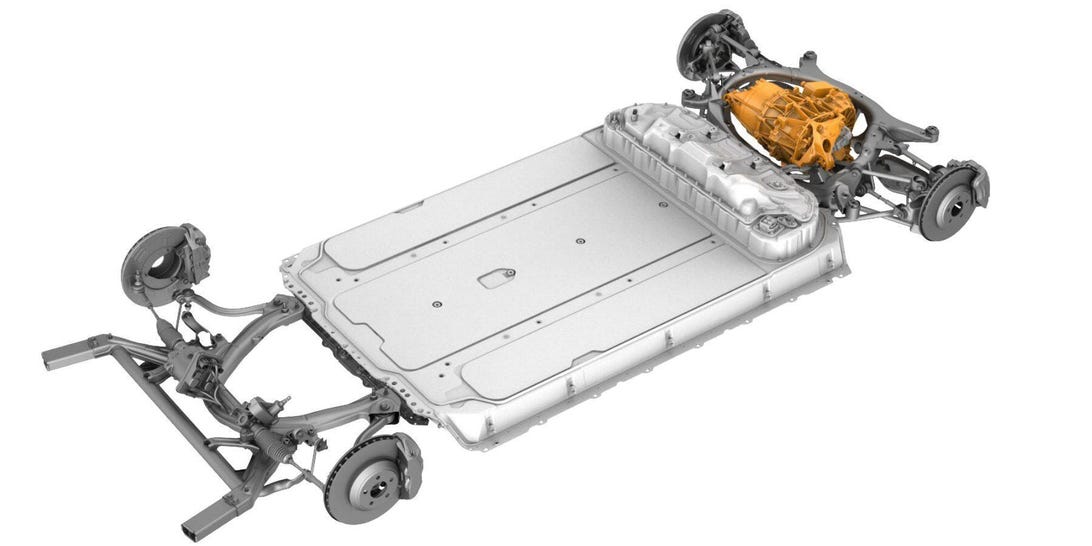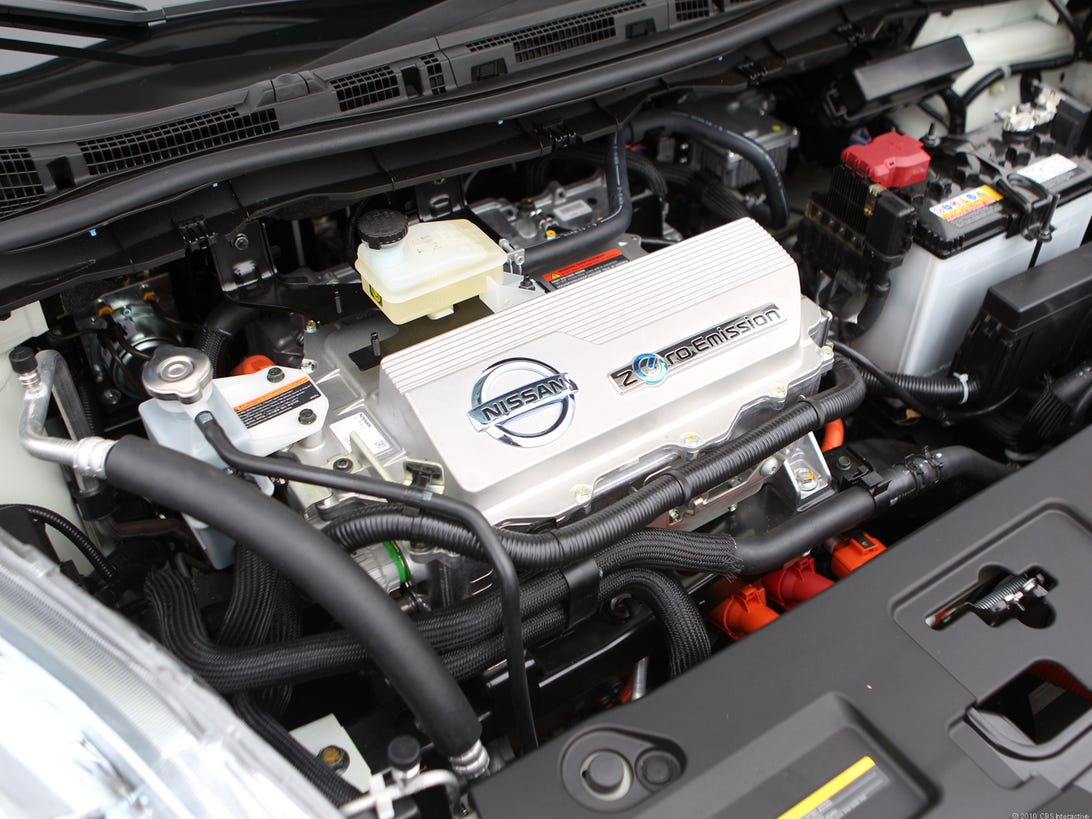This story is part of Plugged In, CNET's hub for all things EV and the future of electrified mobility. From vehicle reviews to helpful hints and the latest industry news, we've got you covered.
There's plenty of hype around EVs, but has anyone explained to you how they work? Here are the basics for people who just want to know what they're buying and not geek out.
In terms of getting around there are five major components that separate an electric car from one that burns gas:
- Battery Charger
- Battery
- Power Control Unit
- Motor(s)
- Gear(s)
Battery charger
Contrary to common belief, the thing on your garage wall or on a pole at the shopping center isn't the charger, it's Electric Vehicle Service Equipment that provides power to the charger which is built into your EV. That charger converts the AC power the ESVE delivers into DC power that the battery can store. That can be done via either a slow Level I charge when the car is connected to a 120-volt EVSE or a faster Level II charge when it's tapping into 240 volts.

Nope, these aren't EV chargers, not strictly speaking, anyway. These are power connectors that feed electricity to the charger that's built into the electric car.
ChargePoint/Dcbel/United Chargers/WallboxException: When you use a fast charger, like a Tesla Supercharger, that's a DC power connection. It's at far higher levels of current than your home can provide, which is how it charges your car so much faster.
Battery
The battery is the heart of any EV. It substantially determines a car's highly scrutinized range, typically higher cost and much greater weight. It's both the magic and a curse.
The battery is usually laid out as a big flat panel under the belly of the car, inside of which are smaller modules containing many even smaller cells. Some cars eschew the belly-pan style battery and shape it more like a piece of luggage tucked away in cavities of the car body. But the shape and location of the battery is of little importance to the average buyer. All that matters is the range the whole car delivers.

There's plenty of room under a Tesla Model 3 for a huge, flat battery pack. This "skateboard" layout is preferred across the auto industry but isn't the only way to orient an EV battery.
TeslaBatteries store DC power, whether they're in a flashlight, phone or a car. That's why the charger has to convert AC to DC to recharge the battery and that's also one of the main jobs of the next component, though in reverse.
Power control unit
The power control unit is an assembly that goes by various names and is not something carmakers typically advertise, but it's important. Its most critical job is to convert the DC power stored in the battery back into AC that most EV motors use. This is done with a component called an inverter, a version of which you may already use to power your laptop or other house current device from the 12-volt port in your car's dash.

What looks like a little four-cylinder engine under the hood is actually the power control module for the lithium ion battery pack and electric motor. Below it sits an 80-kilowatt motor that turns the front wheels.
Josh Miller/CNETThe power control unit also interfaces the drivetrain to the accelerator pedal, start button and drive mode controller. And, crucially, it oversees regeneration which is how an EV puts power back into its own battery when coasting or braking.
Much of Tesla's success has been its ability to optimize the various power flows and conversions that take place in its EVs, testament to the importance of the least-touted component in an EV.
Motor
The motor is, of course, what turns the wheels but unlike a combustion car you might have one motor or several in an EV. More motors can make an EV faster, imbue it with sophisticated all-wheel drive, or both. But don't lift the hood expecting to gaze upon an impressive-looking motor as you might a conventional car's engine. They're typically compact and not much to look at, often buried out of sight.

Not nearly as impressive to look at as a gas engine, each of these Tesla electric motors produces 248 horsepower and can push a Tesla Roadster up to a governed 125mph, and make 60mph from a stop in 3.9 seconds.
CBS InteractiveIt's fully valid to compare horsepower and torque between a gas and electric car. Note how high the torque spec is on any EV you consider, part of the nature of electric motors and making EVs a kick to drive beyond what their horsepower rating might suggest. And electric cars can deliver most of their torque starting at low RPMs, while gas-engine cars need to be revved up to deliver maximum acceleration. Motors are just different from engines, which you'll note the first time you drive any EV.
Transmission
Not much to say here since electric motors don't really need a transmission. The nature of their operation makes them efficient and powerful across a much wider range of RPMs than combustion engines, so they don't need six, seven or even 10 gears as crutches to help them accommodate different vehicle speeds or loads.
Having no typical transmission an EV has a drive mode selector instead of a PRNDL. Federal regulations require that any car sold in the US comply with certain conventions including placing Park at the end of the drive controller's travel and Reverse adjacent to that. But EV drive controllers often take some unconventional shapes and may add an unfamiliar position that puts the car into a higher mode of the regeneration while driving, as described earlier.

This rather odd shifter portrays the difference in an EV powertrain compared to the many-geared transmissions of combustion engine cars.
ToyotaIt's simple
This list may seem like a lot but EVs have simpler drivetrains that use 70% to 90% fewer parts than a gas-engined car. That collection of fewer parts still typically costs more than a gas engine car but as scale drives down EV cost, their inherent simplicity should only turbocharge that curve.
"electric" - Google News
May 14, 2022 at 07:00PM
https://ift.tt/uvPZqkJ
How Electric Cars Work - CNET
"electric" - Google News
https://ift.tt/OpGNwgu
https://ift.tt/qWdHjEJ
Bagikan Berita Ini















0 Response to "How Electric Cars Work - CNET"
Post a Comment